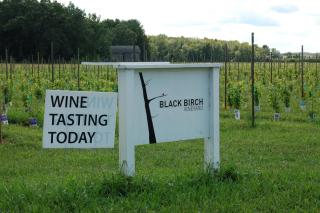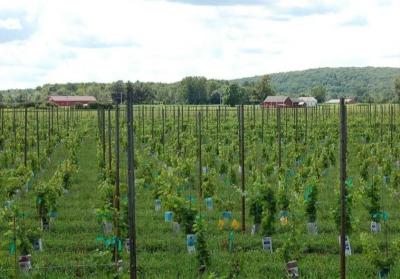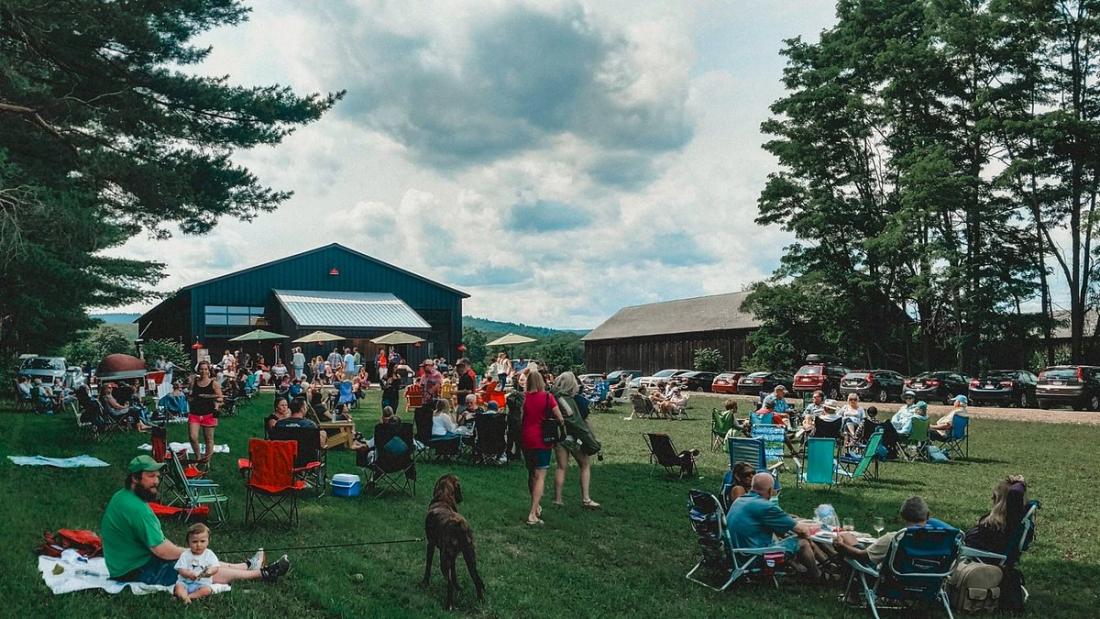Hatfield’s Sliwoski Farm: Achieving the Impossible with the Community Preservation Act

Written by Chase Mack
In 2019, the town of Hatfield was facing a conundrum with a parcel of land known as Sliwoski Farm. Upon discovering that the land no longer qualified under the state’s Agricultural Preservation Restriction (APR) program due to the soil quality, the owners were prepared to place the farm on the open market, with a developer making an offer of $430,000 to construct a subdivision of 18 houses. But because the land was enrolled in the state’s Chapter 61A program, the town had the Right of First Refusal (RoFR) to purchase and protect the 26-acre property before it was irrevocably altered. The problem was: how could Hatfield fund such an endeavor, especially given the fact that they only had 120 days to make an offer? The answer is never easy when it comes to land protection, but Hatfield banded together with a team of allies to make it happen. Having local Community Preservation Act funding available was a key factor that ultimately allowed the town to work together with a local land trust, the property owners, and a neighboring winery to permanently protect the scenic Sliwoski Farm while providing a limited development opportunity for much-needed housing.
The 26-acre Sliwoski property was owned by a brother and sister who maintained the single-family farmhouse while renting the land to a neighboring dairy farm—and while the land was in close proximity to other parcels enrolled in the state’s APR program, tightening soil standards meant that their application to preserve the farm in this way was denied. Seeking other means to protect this property from development, the owners approached Hatfield’s Agricultural Advisory Commission to see if there was any possibility of the town stepping in to take action. This proved to be a lofty task: Hatfield would need to be able to match the developer’s offer of $430,000 by some means, which would be a tall order even without the limited window of opportunity for the town to act on its Right of First Refusal.
 Sliwoski Farm’s owners had one clear advantage to offer Hatfield’s Agricultural Commission, as the neighboring Black Birch Vineyard winery had expressed interest in owning the land to expand their cropland bases (with the added benefit of avoiding nearby construction that would place stress on their operations). Representatives from the Agricultural Commission also stepped up to the challenge by approaching the Kestrel Land Trust for advice and potential assistance in executing a protection plan. And of course, Hatfield also had their local CPA fund to rely on—after coordinating with the Community Preservation Committee, it was determined that the town had up to $120,000 available that could be contributed towards the purchase of a Conservation Restriction on the property. Even with these assets combined, however, it still fell short of the full $430,000 value that the town needed to match.
Sliwoski Farm’s owners had one clear advantage to offer Hatfield’s Agricultural Commission, as the neighboring Black Birch Vineyard winery had expressed interest in owning the land to expand their cropland bases (with the added benefit of avoiding nearby construction that would place stress on their operations). Representatives from the Agricultural Commission also stepped up to the challenge by approaching the Kestrel Land Trust for advice and potential assistance in executing a protection plan. And of course, Hatfield also had their local CPA fund to rely on—after coordinating with the Community Preservation Committee, it was determined that the town had up to $120,000 available that could be contributed towards the purchase of a Conservation Restriction on the property. Even with these assets combined, however, it still fell short of the full $430,000 value that the town needed to match.
Even with resources like the Community Preservation Act available, how can a community possibly compete with the amount of funding that developers have at their disposal in order to save a piece of land? The answer in this case lies in an important provision of Chapter 61A. The RoFR process allows a municipality to assign a qualified non-profit conservation organization to maintain no less than 70% of the land in its original open space use (in the case of Sliwoski Farm, this use was agricultural in nature). This means that the statute also allows for the protection plan to include the development of up to 30% of the parcel in the purchase offer—which is exactly what Hatfield took advantage of in order to save as much as the Sliwoski property as possible.
Working under these parameters, a plan was drafted to protect 22 acres of the original parcel with a conservation restriction and set aside the remaining 4 acres to be developed for residential housing, resulting in the preservation of 85% of the property for future agricultural use. The end result was an incredible collaboration of efforts to change the fate of Sliwoski Farm forever:
- The Hatfield Agricultural Advisory Commission submitted an application to the Community Preservation Committee in order purchase the conservation restriction.
- At a Special Town Meeting, residents approved of the use of $120,000 in CPA funds to purchase the conservation restriction on 22 acres of Sliwoski Farm, held by the town’s Conservation Commission.
- A separate article at the same Special Town Meeting was also approved to utilize $60,000 in CPA funds to pay for an affordable housing restriction on one of the three house lots planned for the property (the developers ultimately decided not to incorporate these funds into the project, and so the grant was later returned to Hatfield's CPA Housing reserve).
- Black Birch Vineyard purchased the protected land for approximately $90,000, with the Kestrel Land Trust orchestrating the real estate transaction on behalf of the town.
- The remaining $220,000 was covered by allowing the development of 3 house lots with a shared-driveway design.
“This would not have been possible without the availability of CPA funding,” said Bob Wagner, who in 2019 chaired both Hatfield’s Agriculture Commission and its Community Preservation Committee. “The protection of this land on the Sliwoski Farm reflects the importance to Hatfield residents of retaining agricultural business opportunities and the soil resources that sustain them. This was a true community effort.”
Today, Hatfield’s very first attempt at navigating the complexities of Chapter 61A has been a comprehensive success. Black Birch Vineyard has expanded their grapes onto a portion of the farmland with the best soil quality, with the remainder of the land being used as a pasture for grazing herds of sheep. The 4-acre portion of land set aside for development was sold to a family that is now building houses for the parents and their two adult children. And mostly importantly of all, this new future for Sliwoski Farm would have been very different without the community itself investing in their local CPA program.


